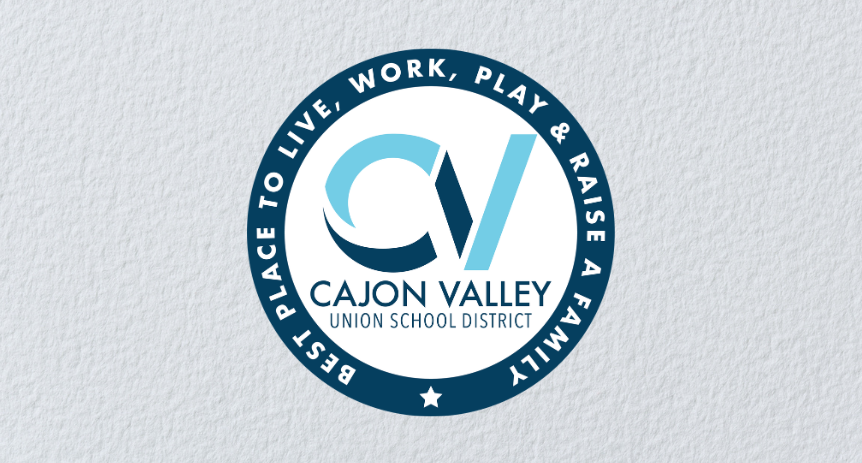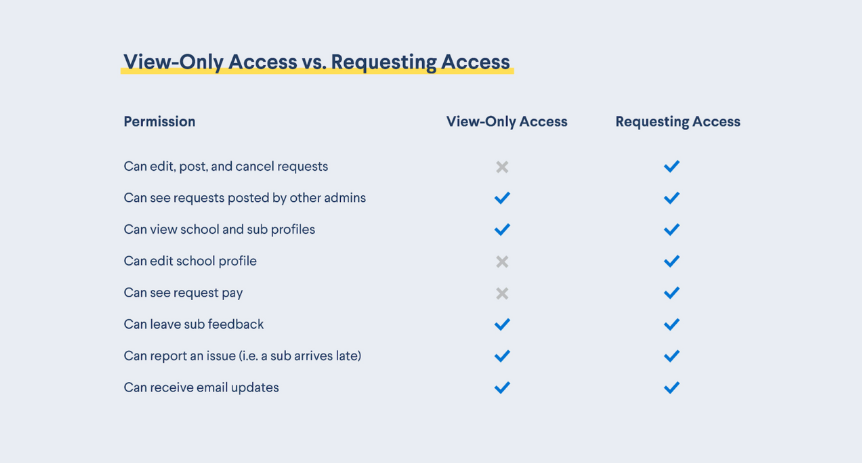If you’re reading this article, you already have the drive to set your subs up for success. With a bit of thoughtfulness, organization, and preparation, you can build out a success plan so substitute teachers thrive in your school. The benefits? Your students will get a better education from their subs, your teachers will know their classes are in good hands, and substitutes will want to work at your school again and again.
Here are a few practical ways to prepare your substitute teachers for success in the classroom.
Instruct your teachers on how to prepare for subs — before absences arise.
Having a strategy in place before your subs arrive is one of the most foolproof ways to create a successful environment for teachers, students, and substitutes alike.
Creating protocols around sub preparedness will help you maintain consistency between teachers and subs, provide a smoother experience for students, and ultimately save your teachers time. Instead of each educator reinventing the wheel when preparing for a substitute, they can draw on school-wide resources.
Create a clear, organized welcome process.
When substitutes arrive at your school, there’s often a lot of information to go over and not a lot of time to cover it. The more organized, direct, and clearly articulated your onboarding procedures are, the more information your subs can take in, the better their questions will be, and the more prepared they’ll be when that first bell rings.
Here are some hallmarks of a great welcome process:
- Before their first day, make sure substitutes have clear instructions on where they should go when they first arrive at your school and who they should report to
- Give subs a thorough tour of your school, highlighting points of interest, such as bathrooms, break rooms, and emergency exits
- Provide physical copies of relevant fundamental information, such as the bell schedule, campus map, emergency protocols, and staff contact info
Don’t expect them to be able to pull up online resources immediately — first days are notorious for login and access problems. By providing paper documents, you can ensure that your subs are ready to go —even if their computers aren’t.
Provide sub-friendly classroom management plans
Each school is different when it comes to behavioral expectations, disciplinary protocols, and fundamental rules. While one school may emphasize respect above all, another may prioritize kindness, making for two entirely different school cultures.
Provide your substitutes with classroom management “cheat sheets” that give them a clear picture of what the students are used to, what expectations the school has for behavior, and how they should proceed given various levels of misbehavior or disruption.
These plans may include:
- Info on school-wide behavioral guidelines
- Explanation of classroom expectations
- Ideas for rewards and discipline that the students are familiar with
- Classroom-specific notes on student helpers and challenging students
- Who to contact in case of emergency or out-of-hand students
Connect subs with an “emergency contact” teacher
Even the most prepared substitute, who has gone through the most thorough onboarding process may run into unforeseen snags, technical difficulties, or classroom management challenges. Introduce your subs with a fellow teacher that they can connect with if they need immediate backup or quick guidance.
Be sure the sub knows where their buddy teacher’s classroom is and how to reach them if they are out and about. You may even want to provide your subs with the teacher’s schedule, along with instructions on who to contact if the teacher is unavailable.
Give your subs backup lesson plans and activities, just in case.
Ideally, your teachers will always be able to provide clear, time-appropriate, thoroughly lesson plans for their subs, but you know that’s not always the case. Teachers get sick unexpectedly, get called away to care for family, or face another emergency, and their subs will enter the classroom with zero lesson plans on hand.
Luckily, a strong sub will be adaptable — they’ll think on their feet and come with their own ideas of how to keep students on track. But, to help them out, you can provide them with “plug and play” lesson plans that you keep on file for just such a circumstance.
And, even if they do have lesson plans, you may want to provide them with a list of backup activities to fill time, keep early-finishers occupied, or to round out those last 10 minutes of the day.
Guide them through classroom technology.
A common source of (avoidable) stress for subs is fumbling through technical difficulties while the entire class is waiting.
Be sure each of your classes has detailed, accessible instructions for operating any technology. If possible, go over the technology with the substitute teacher before class to make sure they can log in to necessary sites, navigate the required teaching tools, and avoid common difficulties. If they are having trouble with IT, get them the proper support right away.
To make sure this information stays up-to-date, take an inventory of tech needs for each classroom. You may want to create a central document or resource for logins, online educational resources, and other tools, and encourage teachers to update the list whenever anything changes.
Fill subs in on the dismissal procedure.
Just like behavioral expectations, each school has a unique dismissal procedure. This is one of the most crucial times for your school since it’s essential that pickup is done correctly to keep students safe. So, to avoid a stressful situation for your substitute or end-of-day chaos, be sure subs have a clear idea of what’s expected before the kids start running out the door.
Here are things substitute teachers may need to know about dismissal:
- Do students get extra time to prepare before the bell rings?
- Are students taking the bus or attending an after-school program dismissed before the others?
- Do teachers walk students to an exit?
- Are teachers expected to make contact with parents or guardians? How should the sub handle this aspect of the day, given they are unfamiliar with the students’ families?
- Where can the sub access dismissal information? If there’s an issue, who should the sub contact for help?
Provide guidelines and templates for end-of-the-day reports.
The value of the end-of-the-day report is immeasurable for the classroom teacher. It allows substitutes to share their experiences and have them validated. It can help inform teachers of what works and doesn’t work while they’re away. And, it provides a forum for student accountability and for continuity between their educators.
If your school doesn’t already have a template for substitutes to use, you may want to provide one:
Do your homework.
To prepare your substitute teachers, it helps to get some insight into what’s already working at your school and what could use an overhaul.
So, ask previous subs about their experiences. You can give them an anonymous form, such as a survey platform, to let you know what worked about working at your school, and what created fumbling blocks to their success. Use their feedback to shape your first-day processes, your teacher education, and your strategy when it comes to hiring and nurturing subs.
Looking for more on how to make your school appealing to subs? Check out our blog on how to retain subs in a competitive market.





